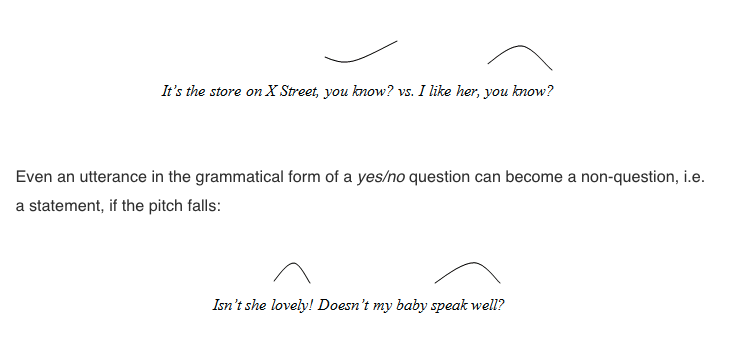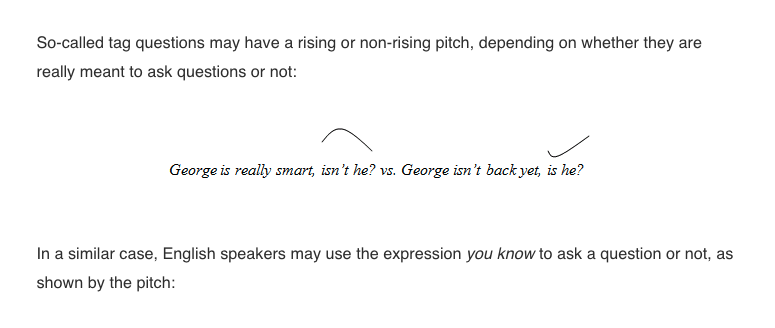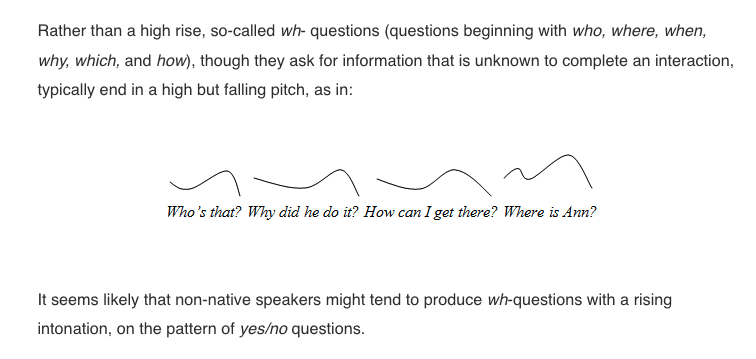ref – https://www.englishclub.com/pronunciation/word-stress-rules.php
SLA – second language acquisition
Linguistic environment that serves as stages for learning the second language.
Speakers of the target language and their speech to the L2 learners provide linguistic input in the form of listening opportunities embedded in social/academic situations.
L1
L1 is used to refer to the student’s first language.
An L1 is your first language, your native language, or your mother tongue.
You are a native speaker of that language.
Every developmentally healthy human being has a first language. Often (but not always) this is the language that was learned during childhood—before puberty—and is the language that is most used and most comfortable for a given person.
First languages are generally maintained for life, with little overt effort on the part of the speaker. This is because first languages are often woven into the personal and sociocultural identities of the native speaker, and he or she uses the language to think and to interact with family and other members of their cultural or ethnic group.
L1s are learned through a process known as First Language Acquisition, or FLA.
First Language Acquisition is the process of gaining the capacity to use human language, where previously no such capacities existed.
L1s are acquired automatically, without conscious effort.
L1s are learned before puberty, typically during infancy.
An acquired L1 is known at native proficiency.
It is possible to have several “first languages”, so long as they are learned prior to puberty.
For example, children who grow up in households where two languages are spoken (typically in the case of parents of different linguistic backgrounds) may acquire each of those languages natively. These people are referred to as bilingual.
L2 or Second Language
while L2 is used in the same way to refer to their second language or the language they are currently learning.
How Are L2s Learned?
L2s are learned through a process known as second language acquisition, or SLA.
Like first language acquisition, second language acquisition is a complex field of linguistics. Though many of its theories and facets are constantly under debate, the general commonalities of SLA are:
- Second language acquisition is the process of acquiring language capacity after another language (or languages) have already been learned natively.
-
Learning an L2 requires conscious effort.
-
L2s are not learned during infancy, and most often after puberty.
-
Theoretically, an acquired L2 can only be known at non-native proficiencies. Exactly how proficient a language learner can become in a second language can range widely, but the general scientific consensus is that an L2 cannot be mastered to the same level as an L1. Highly advanced L2 learners are often called near-native speakers.
-
Though capacity in both L1s and L2s can deteriorate from lack of use (through a process called attrition), L2 capacity is considered to decrease faster from misuse than their L1 counterparts.
As with the term L1 above, the use of the number two in “L2” or “second language” does not necessarily refer to the exact numerical order in which a language is acquired, but only that the language was learned non-natively. In nearly all cases, L2 can be used to refer to any number of languages learned after puberty.
Together, L1 and L2 are the major language categories by acquisition. In the large majority of situations, L1 will refer to native languages, while L2 will refer to non-native or target languages, regardless of the numbers of each.
Bottom-Up listening – decode
Process and comprehend smallest parts of the language. You start by listening for the individual sounds and then join these sounds together to make syllables and words. These words are then combined together to form phrases, clauses and sentences. Finally the sentences combine together to form texts or conversations.
Listening involves ‘bottom-up’ processing (in which listeners attend to data in the incoming speech signals)
Text based.
It is to know about the details and segments.
It concentrates on forms and structure.
Listener relies on the language (sound + words + grammar = meaning)
Text itself represents the main source of information.
(masculine)
Examples
Your English teacher asked you to read about a certain topic. Then he instructed you to listen to recorded material to find out if the same points are mentioned.
Friend tries to explain how you can go on a trip to Palawan for the first time. You make sure you do not miss any important details and instructions about the trip.
Top down – Processing and comprehension starts with background knowledge
Theory driven – Make use of what you already know.
- Listen for the main idea (Context of the message)
- Predicting
- Drawing inferences
- Summarizing
Example:
Korean guy tries to sell you shoes in Korean. No idea what he said. But can look at his body language, facial expression..etc.
Unknown person comes to shake your hand and say hi in another language…you’d have to guess from facial expression, and body language of holding hand out…this is example of top down.
If say horses, you can use your background knowledge about horses to understand its context.
Four fundamental properties of spoken language
This accessibility is made possible in part through accommodations made by native speakers to make language comprehension possible and in part through strategies the learner enacts to make the speech comprehensible.
Speech processing
syllable – a unit of pronunciation having one vowel sound, with or without surrounding consonants,
A syllable is a part of a word that contains
a single vowel sound and that is pronounced as a unit.
So, for example, ‘book’ has one syllable, and ‘reading’ has two syllables. We children called her Oma, accenting both syllables.
Research in spoken-language recognition shows that each language has its own ‘preferred strategies’ for aural decoding, which are readily acquired by the LI child, but often only partially acquired by the L2 learner. Preferred strategies involve four fundamental properties of spoken language:
-
1. the phonological system: the phonemes used in a particular language, typically only 30 or 40 out of hundreds of possible phonemes;
note: A phoneme is the smallest unit of sound in speech
the letters that make up syllables, individual sounds.
i.e ‘a’ in cat, or ‘a’ in kate. Sounds that make up syllables
-
2. phonotactic rules:
the sound sequences that a language allows to make up syllables;
i.e. variations of what sounds can start or end syllables, whether the ‘peak’ of the syllable can be a simple or complex or lengthened vowel and whether the ending of the syllable can be a vowel or a consonant;
RULES for adding groups of sounds (when/how the sounds) that get added to words.
sixth –> sikst
friendship –> frienship
hamster –> hampster
tomato –> tomado
-
3. tone melodies: the characteristic variations in high, low, rising and falling tones to indicate lexical or discourse meanings;
In other words, pitch that gives meaning to words.
Example: If you end a sentence with a rising pitch, it typically means a question.
Certain rules/laws of sounds that gives more meaning to the sentence.
-
4. the stress system: the way in which lexical stress is fixed within an utterance
emphasis certain words. Harder announcements on words to prove your point. It is concerned with how the inflections are applied to the sounds in words.
example:
For compound nouns, the stress is on the first part
example: BLACKbird GREENhouse
For compound adjectives, the stress is on the second part example: bad-TEMpered old-FASHioned
For compound verbs, the stress is on the second part
example: underSTAND overFLOW
How do we know which syllable to stress?
1. For MOST two syllable nouns AND adjectives, stress the first syllable.
For example:
- KNOWledge
- TAble
- ENtrance
- PURple
- SPAcious
- PRESent
- EXport
- CHIna
- TAble
- PRESent
- SLENder
- CLEVer
- HAPpy
2. For MOST two syllable verbs stress the second syllable.
For example:
- conTROL
- reBEL
- proDUCE
- preSENT
- exPORT
- deCIDE
- beGIN
3. For words that end with the suffix -tion or -sion, stress the syllable before.
For example:
- educAtion
- situAtion
- PENsion
- exTENsion
Name and describe three examples of input sources used to teach listening
They all boil down to three main sources.
They are the:
- speaker
- spoken audio
- music
Each of these three input sources activates different parts of the brain.
These audio or video sources can be live or recorded.
A live speaker is different than listening to recorded spoken audio and both of those are different than music.
Therefore, if a teacher uses a combination of the three of them, they will be able to teach listening to students.
Live Speaker
Having students listen to a live speaker is a great way to teach listening. They will learn how to pay attention and will get used to watching someone give a presentation. This is very important because they need to know how to behave when a live person is speaking to them.
Listening to a lecture is very different than conversing with friends.
In giving a lecture, a teacher is:
- encouraging students to listen to him or her while presenting the information.
- They are learning how to watch and listen at the same time.
Although this sounds like a basic skill it is something that students must learn. Knowing how to pay attention, and when, will be very important as life goes on.
A great way to encourage them to work on their listening skills is to:
- have them write down a few things they learned during the presentation.
- Encourage them to take some notes of things that stand out to them or make them think.
- Maybe even give them a worksheet ahead of time so that they have some guidance on what they are looking for.
Weather Reports / Commercial
Climatic Clips
This especially rings true for clips when it has background music for accompaniment. When a scene is climatic, or very tender, or touching in storyline, and the music is just swaying in the background, the listener picks up on the language especially well.
In war movies, battle cries, war speeches, and phrases to rouse the viewer are especially well remembered.
Music
Music is perhaps the most popular form of auditory stimulus. In addition, it is one of the most effective ways to learn information. Songs are very easy to remember and the tunes often get stuck in people’s heads. As a result, they are learning how to listen. They are remembering the words in the song. Then all they have to do is think about what the song is about.
Of course, it is important to make sure that whatever songs you use in the classroom are songs that you want students to think about. In other words, they need to be clean.
Name and describe the four major processes of speech production
Initiation – is the moment when the air is expelled from the lungs
Phonation – vocal folds vibrate to make a sound. the production or utterance of speech sounds
Oro-nasal process – (The main articulators involved in speech production are the oral tract, the nasal tract and the upper portion of the pharynx, the nasopharyngeal port.),
articulation – The airflow from the lungs is then shaped by the articulators in the mouth and nose
What is pedagogy
Pedagogy, pronounced “peh-duh-gow-jee,” is a term that refers to the method of how teachers teach, in theory and in practice.
Pedagogy is formed by an educator’s teaching beliefs and concerns the interplay between culture and different ways to learn.
This can involve skills like writing clearly or knowing how to engage students in class so they pay better attention. Outside the classroom, your communication skills can be useful for talking to parents about their child’s progress and needs.
the teacher’s main role is to promote student learning. The teacher needs to be capable in terms of the content and student learning, be able to organize lessons, facilitate the interaction and solve challenges in classroom.
the constructivist approach – Constructivism is the theory that says learners construct knowledge rather than just passively take in information. As people experience the world and reflect upon those experiences, they build their own representations and incorporate new information into their pre-existing knowledge (schemas).
Allow pairs of students to teach each other. Learners pose their own questions and seek answers to their questions via research and direct observation. They present their supporting evidence to answer the questions.
the collaborative approach – A collaborative (or cooperative) learning approach involves pupils working together on activities or learning tasks in a group small enough to ensure that everyone participates.
the reflective approach – Reflective pedagogy is a teaching model where educators continually reflect upon their lessons and curriculum to improve future iterations of their course. Instructors who use the reflective pedagogy model regularly gather data on student satisfaction, engagement and belonging to help inform subsequent lessons.
Reflective teaching is a process whereby teachers reflect on their teaching practices in order to examine the overall effectiveness of their instructive approaches. Improvement or change in teaching methods may be required, depending on the outcome of this analytical process, which is based on critical reflection.
the integrative approach – is an approach where the learner brings together prior knowledge and experiences to support new knowledge and experiences. By doing this, learners draw on their skills and apply them.
An example of an integrative learning project involving citizenship and community must first involve student interest. A teacher can encourage students to identify a problem in their community, such as an environmental issue or traffic problems that is important to the students.
Once the students find a problem that speaks to their interests, they can form a plan. Perhaps they will decide to write to editors of a local newspaper, or a congressman. If they become more interested in the problem, they can collect data and create an in-depth report with charts and graphs to display their findings. In order to see action taken in the community, they may become involved in the workings of local government by contacting the relevant departments or going to a city council meeting and presenting their findings. They may even sit on a committee to monitor progress on the problem over time. The learning that occurs is directly applicable to their lives, and will develop skills they will utilize as socially aware citizens.
the inquiry-based approach – a learning process that engages students by making real-world connections through exploration and high-level questioning. It is an approach to learning that encourages students to engage in problem-solving and experiential learning.
i.e experiments, field trips, classroom debates, projects, group works.
Name and describe techniques and methods that are successful in English L2 writing classrooms
- careful needs analysis to plan curriculums
-
co-operative and group work (including collaborative writing) that strengthen the community of the class and offer writers authentic audiences
- integration of language skills in class activities
- learning style and strategy training to help students learn how to learn
- and the use of relevant, authentic materials and tasks
One idea for English L2 writing teaching method is to use related vocabulary for students to create stories from the vocabulary lists.
The teacher can ask students in each group to brainstorm 10 vocabulary of the writing topic. Then, each group comes to the board and writes down the vocabulary. After that the whole class can discuss the vocabulary meaning together in class and ask each student to use the vocabulary to write an article of the topic with the vocabulary discussed on the board.
Another teaching method for English L2 writing classrooms is to use photos! The teacher can ask each student to bring 3 – 5 photos from a subject that the teacher is going to teaching for the next class. It can be travel photos, holiday photos, or other subject photos. Then, the teacher can ask students to work in pairs to exchange photos to tell each pair’s photo story and write the story down on a piece of paper. Then each student tells the story of his or her partner’s photo story in class.
Define: Grammar, Morphology and Syntax
Grammar seek to explain the same phenomena: how words are formed (morphology) and how words are combined (syntax).
A grammar does not describe the meaning of the strings or what can be done with them in whatever context—only their form.
Formal Grammar – A formal grammar is a set of rules for rewriting strings, along with a “start symbol” from which rewriting starts.
Formal grammar is a set of rules. It is used to identify correct or incorrect strings of tokens in a language. The formal grammar is represented as G. Formal grammar is used to generate all possible strings over the alphabet that is syntactically correct in the language.
At a high level, the definition of grammar is a system of rules that allow us to structure sentences. It includes several aspects of the English language, like: Parts of speech (verbs, adjectives, nouns, adverbs, prepositions, conjunctions, modifiers, etc.)
Morphology
Morphology is arrangement and relationships of the smallest units of the language.
Morpheme – smallest unit of a word with meaning. How word parts can be arranged.
Morphology is the study of how parts of words, called morphemes, create different meanings by combining with each other or standing alone. For example, if you take the morpheme cookie and add the suffix –s, you create a new word—cookies, a plural form with a slightly different meaning than the singular form.
Example:
Firehouse – Morphemes are the words fire and house. Putting them together creates a word.
Doghouse – dog and house.
Bathroom – bath and room.
For instance, the word “dogs” is composed of two morphemes: the stem word “dog” and the inflectional suffix “-s” to indicate the plural form of “dog”. The word “jumped” is composed of two morphemes: the stem word “jump” and the inflectional suffix “-ed” to indicate the past tense of “jump”.
Morphology deals with parts of words called morphemes. Morphological analysis looks at how morphemes can be combined or separated to make different words with different meanings.
The most common examples are plural nouns. Usually a noun’s root word alone means the singular version; for example, for the morpheme cat, the root word cat means “one cat.” To talk about two or more cats, we take the morpheme cat and add an –s to the end; this is because spelling plurals with –s or –es is common in English. Understanding the relationship between cat, cats, and the suffix –s is all part of morphology.
How Morphology can help us improve our English
For one thing, morphology can improve your reading comprehension by helping you understand the meanings of words you’ve never seen before. Morphology can also answer a lot of frustrating questions, like why some words are spelled weirdly or why irregular words don’t follow the normal rules.
Moreover, studying morphology introduces you to new morphemes, which expands your vocabulary and teaches you brand-new words. This, along with other techniques from our writing guide, can only improve your writing.
There are two types of morphemes
1 Free morphemes are morphemes that can exist independently as individual words. These are typically root or base words, like the free morpheme comfort.
2 Bound morphemes are morphemes that cannot exist independently and must be used together with a base word. These are typically affixes—prefixes or suffixes—like the bound morphemes un- and –able in the word uncomfortable.
Let’s look at another morpheme example: deconstruction.
In this word, there are three morphemes: construct, de-, and –ion. Only construct is a free morpheme; on its own it is still a complete word. However, de– and –ion are bound morphemes; neither is a complete word that makes sense when used alone.
Morphemes vs. syllables
Morphemes are often confused with syllables because both are used to break up words into smaller parts. However, the two are not related.
While morphemes are parts of words broken up by meaning, syllables are parts of words broken up by sound.
Syllables are typically individual sounds in a word, almost always involving a vowel and usually with an additional consonant sound or two. For example, the word caterpillar has four syllables: cat–er–pil–lar.
However, morphemes aren’t based on sound, so a single morpheme can have more than one syllable. For example, the entire word caterpillar is still just one morpheme, even though it’s four syllables.
Lesson plan for beginner students
Go over a few words that rhythm. Then use them together to create a short passage. But first, I’d go over their meaning and examples on how to use them.
– smile
ex: I like to smile
– mile
ex: I walked one mile
– Kyle
ex: My name is Kyle
– pile
ex: I sat on a pile of leaves
– rile
ex: Please do not get riled up!
– vile
ex: That dish smells vile!
Then create a short story about it:
Kyle runs six miles every day. When he is running, he feels happy, so he smiles.
If Kyle does not run, he will feel riled and appear vile.
After his run, he will drink water and eat a pile of mashed potatoes.
Have my students read the passage and answer questions. They need to describe their answers like so.
Who is Kyle?
Kyle is a runner.
What happens when he is running and feeling happy?
He smiles.
What happens when he does not run?
He will feel riled, and look vile.
What does he like to drink after his run?
Water.
What does he like to eat after his run?
Mashed Potatoes.
I will keep repeating these questions and discuss students’ answers.
This will encourage them to use these words over and over. It will also improve their listening comprehension.
Define and describe the elements of pronunciation.
-
stress – defined as the degree of force or loudness with which a syllable is pronounced as to give it prominence.
As you see, words contain syllables.
One syllable words – as in chair, red, and, lost, live, etc.;
Two syllables words – such as
table (tay bull),
little (li tol),
risky (ris kee),
sad-ness,
final (Fi Null)
three syllables or more words – such as beautiful, respective,
photographer, unbearable, etc.
When a word has more than one syllable, one
of the syllables may be considered more important than the others, for
example the word lazy'. The first syllable la’ is considered more important
(and this often occur in two-syllable words, where first syllable is considered more important than the other one). Thus, the first syllable is stressed to indicate the condition. Then, you will see it written this way: ‘lazy. This happens in most two-syllable words. The first part is considered more important than the others so that the first syllable is mostly stressed.
-
rhythm – Rhythm is the sense of movement in speech, which is marked by stress, timing and quantity of syllables. Spoken English words with two or more syllables have different stress and length patterns.
The rhythm of English is based on the contrast of stressed and unstressed syllables in regular intervals, with the stresses falling within content words.
The stressed syllables of the sentence create beats. The beats of the following sentence fall on the words ‘like’ and the second syllable of ‘Colombia’: “I like Colombia”.
-
ref – https://owlcation.com/humanities/Pitch-Definition-And-Examples-Of-Pitch-In-English-Pronunciation
pitch – In contrast, a high pitch range indicates an informational contrast as shown in example (a). Because high pitch range implies a contrast even when one is not explicitly present in the discourse, it can be used to single out individual words for special attention as in example (b).
a) I’m going to Harvard, not Yale!
b) I’d never do that.
Low pitch range is used when the speaker wants to assert that two items in successive tone units are in some sense equivalent, as in example (c):
I told you already, dummy.




- intonation –
Vowels
Vowels are open sounds, which means the voice flows freely through the mouth without being blocked or obstructed in any way. The mouth is like a tunnel, and as the voice flows through it, we change the shape of the tunnel with our jaw, tongue, and lips to form the sound of each vowel.
In English there are two primary types of vowels, pure vowels, made by one mouth position that produces one vowel sound, and diphthong vowels, which move from one vowel sound to another as the mouth position changes.
Examples of diphthong:
aw – straw, law, cause
oy – toy boy, coin, noise
ow – cow, now, flower, cloud
The English alphabet has five written vowels, A-E-I-O-U, but quite a few more spoken vowels, so written English cannot be an accurate guide to pronunciation.
For example, the English letter “O” is pronounced five different ways, as in hot, love, soft, home, do.
To speak English well, it’s essential to use a phonetic alphabet guide, which provides a different written symbol for every vowel and consonant sound, giving you a way to learn and notate the correct pronunciation of any word.
Some languages don’t require a great deal of movement in certain areas of the mouth; the jaw may not open wide, or the lips don’t move very much. Good sounding English, however, requires flexibility, control, and precise articulation of the muscles in and around the mouth. Our exercises are designed to bring consciousness and control to all areas of the mouth required to pronounce English well.
Consonants
Whereas vowels are open sounds, consonants are closed sounds, produced by various kinds of contact between the “articulators” (tongue, teeth, and lips) that block and release the flow of breath and voice, or restrict them to create friction.
Some languages are constructed from fixed consonant-vowel units, so there’s no reason to separate them, but English consonants and vowels combine in many different ways, so we have to learn each one separately.
There are twenty-four consonants in English. Sixteen consonants form eight pairs called “cognates,” each pair made with the same physical technique, the difference being that one consonant is made with the breath alone (unvoiced), and the other is made with the voice (voiced).
Let’s talk about voicing. Voiced and unvoiced pairs.
The first 8 boxes below show the consonant sounds IPA symbols for voiced and unvoiced consonant pairs.
English consonants can be unvoiced and voiced.
An unvoiced consonant means that there is is no vibration or voice coming from the voicebox when the sound is pronounced. Examples of unvoiced consonant sounds are /s/, /p/ and /t/.
A voiced consonant means that there is voice or vibration coming from the voicebox when the sound is pronounced. Examples of voiced consonant sounds are /v/, /b/ and /g/.
A consonant pair is when the mouth position required to make two sounds is the same, but one sound in unvoiced and one sound is voiced.
We have put the voiced and unvoiced pairs in the box together. Remember that the mouth position for the pair is exactly the same, the only difference is that one is voiced and one isn’t.
For example, the mouth position required to make the sounds /p/ and /b/ is exactly the same, /p/ has no voice and /b/ is voiced.
/f/ and /v/ require exactly the same mouth position, /f/ is unvoiced and /v/ is voiced.
What learning materials/teaching aids will you utilize in the TESOL classroom?
Flash Cards for students to recall words and their meaning.
Pictures so students can write about what’s happening in it.
Songs for students to learn and model their pronunciation after.
Name and describe 5 language learning strategies for TESOL
The first step of teaching is learning the different techniques and methods TESOL teachers utilize.
Techniques and methods that are successful in English L2 writing classrooms include:
- careful needs analysis to plan curriculums
- co-operative and group work (including collaborative writing) that strengthens the community of the class and offer writers authentic audiences;
- integration of language skills in class activities;
- learning style and strategy training to help students learn how to learn;
- and the use of relevant, authentic materials and tasks.
There are many different approaches, and they can all be used interchangeably to suit your teaching style. The following is a review of approaches:
Art/Musical
Utilizing both sides of the brain is a great key to learning another language. Students acquire the L2 through songs and art such as charts and graphs. Art is also used by students to draw pictures of new words or to create stories about pictures.
This reinforces newly acquired vocabulary.
Direct Based/Communicative
This is where students team up to work with each other and practice conversation or vocabulary words as guided by the teacher.
For example, the teacher would create a scenario such as becoming acquainted with the names of fruits.
The teacher would provide the paper and have the students draw a vegetable and then pronounce the word in both languages.
This promotes a complete recollection of the name and image in their language while linking it with the new English word.
The exercise could be taken one step further by asking the students to
make up a story about the vegetable and using their stories as a collective discussion for the class.
There is an endless amount of scenarios one can create for the students to practice among one another. Instructors should encourage the students to use spontaneous words. Props, flash cards, music and art work are instrumental in creating different scenarios.
Grammar Memorization Speech
This is translating the words for the students and having them repetitively write and speak them. To demonstrate these powerful methods, the teacher can have a drill where he/she asks the students to write a word 20 times and the translation 20 times and speak the word 20 times for 5 days. The drawback with this approach is that it can be repetitive and boring which can cause students to experience frustration due to lack of creativity.
Vocabulary
This approach focuses on teaching vocabulary in order to facilitate language acquisition. At the beginning of every class, the teacher can introduce 5 new words. As time progresses, it would be good to set in motion each class with a warm up of the 5 words from the previous class.
One can then integrate these words into other methods. For example, one can teach such things as directions by taking a walk throughout the school with students. When making a left turn, hold up the vocabulary sign for the word “left,” and then have them memorize it.
Lexical Chunks
According to Lewis (1997, 2000) native speakers carry a pool of hundreds of thousands, and possibly millions, of lexical chunks in their heads ready to draw upon in order to produce fluent, accurate and meaningful language. Most of the expressions we use on a daily basis are ‘fixed’ and are not rule governed.
Therefore more time should be spent teaching base verbs than tense formations,
i.e dance, jump, run (verb without any other suffix)
content nouns should be taught in chunks which include frequent adjectival and verbal collocations,
i.e
collocation refers to a natural combination of words that are closely affiliated with each other. Some examples are “pay attention”, “fast food”, “make an effort”, and “powerful engine”.
Absolutely necessary
Bitterly cold
Deeply affected
Deeply ashamed
Deeply hurt
Deeply moved
Deeply offended
Ruggedly handsome
Scared stiff
Strongly opposed
Actively involved
Badly hurt
and sentence heads such as “Do you mind if…” and “Would you like to…” should be focused on. The lexical approach also suggests that suprasentential linking should be explicitly taught, and prepositions, modal verbs and delexical verbs should be treated as if there were
lexical items. In the TESOL setting, therefore, metaphors and metaphor sets should be taught on account of their centrality to a language.
Define psycholinguistics and bilingualism
psycholinguistics
Psycholinguistics is the discipline that investigates and describes the psychological processes that make it possible for humans to master and use language. Psycholinguists conduct research on speech development and language development and how individuals of all ages comprehend and produce language.
For example, a psycholinguist might choose to focus on how a baby develops their specific language to the exclusion of all others. If you were to study psycholinguistics, you might study the process of language acquisition, or how the human mind develops, perceives, and produces both spoken and written communication
Psycholinguistics covers three main aspects namely : (a) Language Comprehension, (b) Language Production and, (c) Language Acquisition.
Psycholinguistics is all about the study of how individuals comprehend, produce and acquire language in its spoken, written and signed forms, while linguistics is the scientific study of the language only.
Bilingualism
Put simply, bilingualism is the ability to use two languages. However, defining bilingualism is problematic since individuals with varying bilingual characteristics may be classified as bilingual.
Bilingualism means to have the ability to communicate in two languages. For example, a person could communicate in French and Spanish or English and American Sign Language. A person could become bilingual because they are raised in a dual-language household or because they learn a second language later in life
Compound Bilinguals – Use two languages from the start. Many children grow up learning two languages at the same time.
Coordinate Bilinguals – Use only one language at home. Your child can learn the second language when he starts school.
Subordinate Bilinguals – Give your child many chances to hear and practice both languages during the day.
Name and describe 5 language learning strategies for TESOL
-
Cognitive Strategies aid the learners to make and strengthen associations between new and already-known information and, also facilitate the mental restructuring of information. Some examples of cognitive strategies are:
guessing from context,
analyzing,
reasoning, while taking systematic notes and reorganizing information,
Repetition,
Spaced learning,
Explain it to someone else,
Write it in your own language,
Use real world examples,
Distributed practice,
Visualisation techniques,
Quiz yourself
-
Mnemonic Strategies – improve retention through learning techniques to help memorize. These strategies are useful for memorizing information.
Examples are:
by sounds also known as rhyming,
by body movement also known as total physical response,
in which the teacher gives a command in English and learners physically follow this.
-
Meta-Cognitive Strategies help learners manage themselves as learners, the general learning process and specific learning tasks.
There are several varieties that exist. A group of meta-cognitive strategies makes it easier for individuals to know themselves better as language learners.
Meta-cognitive strategies are related to self-management or self-regulation in a given reading activity. Meta-cognitive strategies include planning and monitoring strategies. Planning strategies refer to L2 learners’ actions of what needs to be done, and how and when to do it.
-
Affective Strategies – include individuals identifying their own feelings (for example anxiety, anger, and contentment) and becoming aware of the learning circumstances that cause them. Using a language learning diary to record feelings about language learning is also helpful, as can emotional checklists. However, cultural norms make an influence on
the acceptability or variability of affective strategies.
-
Social Strategies – ease learning with others and help learners understand the culture of the language they are learning.
Some examples of social strategies are
- asking questions for clarification or confirmation
- asking for help
- learning about social or cultural norms/values
- studying together outside of the class
Research findings suggest that these strategies can indeed be taught to language learners, that learners will apply these strategies in language learning tasks, and that such application does produce significant gains in language learning.






